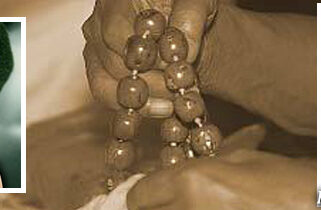Six Goswami’s Business

So the six Gosvamis were, some of them were very prominent government officers. Just like Rupa Gosvami and Sanatana Gosvami, they were two important ministers in the (indistinct) Muhammadan government, Nawab Hussein Shah, his government. They resigned their ministerial post and joined Sri Caitanya Mahaprabhu for propagating His mission of Krsna consciousness. So rupa-sanatanau, they are very responsible government officers, and raghu-yugau, two Raghunatha: one Raghunatha Bhatta and one Raghunatha dasa. Raghunatha dasa was the only son of his father and uncle, very big landholder, Bengal. Their father's income was twelve hundred thousands of rupees in those days. Now you can increase at least fifty times and then calculate what was the income of Raghunatha dasa Gosvami. But he left everything to join Caitanya Mahaprabhu's movement. Gopala Bhatta Gosvami also came from a very learned brahmana family. Similarly, Jiva Gosvami was the greatest scholar till now. Nobody can compete with Jiva Gosvami's scholarship in Sanskrit and philosophy. That is the verdict of all learned scholars. The world's best philosopher and Sanskrit scholar was Srila Jiva Gosvami. He happened to be the nephew of Rupa Gosvami. When Jiva Gosvami's father and uncles left home, he was only ten years old boy. He thought, "If my father and uncles have left, why shall I not leave home?'' So at the age of ten years he left home and went to Benares, the seat of Sanskrit scholars. He learned there Sanskrit very nicely, became a very great scholar, and then joined their uncles in Vrndavana. Of course, at that time Caitanya Mahaprabhu had passed. So Jiva Gosvami, he is also very learned scholar. His books are still adored by all spiritual sections. Sandarbas, six sandarbas, philosophical theses. And then vande rupa-sanatanau raghu-yugau sri-jiva-gopalakau. Gopala Bhatta Gosvami, he was also learned scholar. So all rich men, rich politicians, scholars, great brahmanas, they joined Caitanya Mahaprabhu. It is so nice movement. It attracted thousands of people, just (as) it is attracting you, American boys and girls.
So in those days, a scholarly section, learned section, rich section were attracted by Caitanya Mahaprabhu's movement. And what was their business? This business, as you are doing: krsna kirtana-gana-nartana-parau. Their engagement was krsna ut kirtanam. Krsna kirtanam, singing about Krsna, just like you are doing — Hare Krsna. Krsnot-kirtana, very loudly chanting Hare Krsna, Hare Krsna, krsnot-kirtana-gana, and sometimes prayers, songs. Nartana. Naratana means dancing. These were their engagement: krsnot-kirtana-gana-nartana-parau premamrtambho-nidhi. And as soon as they chanted, immediately they were immersed in the ocean of bliss, prema, ecstasy of love of God, Krsna. Krsnot-kirtana-gana-nartana-parau premamrtambho-nidhi dhiradhira-jana-priyau. They were very much affectionate, or dear, to all classes of people. There are two classes of men: dhira, adhira. Dhira means sober, and adhira means just the opposite, debauchers. So they were dear to both classes of men. This is Krsna-kirtana, is so nice. It is dear to all classes of men. Dhiradhira-jana-priyau priya-karau nirmatsarau pujitau. Because they are not envious. This Krsna consciousness movement is not meant for a particular class of men. It is meant for everyone. So… And what was their other qualification? Sri-caitanya-krpa-bharau… Dhiradhira-jana-priya-priyakarau nirmatsarau pujitau, sri-caitanya-krpa-bharau… They're very dear servitors of Lord Caitanya Mahaprabhu for delivering the fallen souls of this world. And we have to offer our respectful obeisances to the six Gosvamis, vande rupa-sanatanau raghu-yugau sri-jiva-gopalakau.





